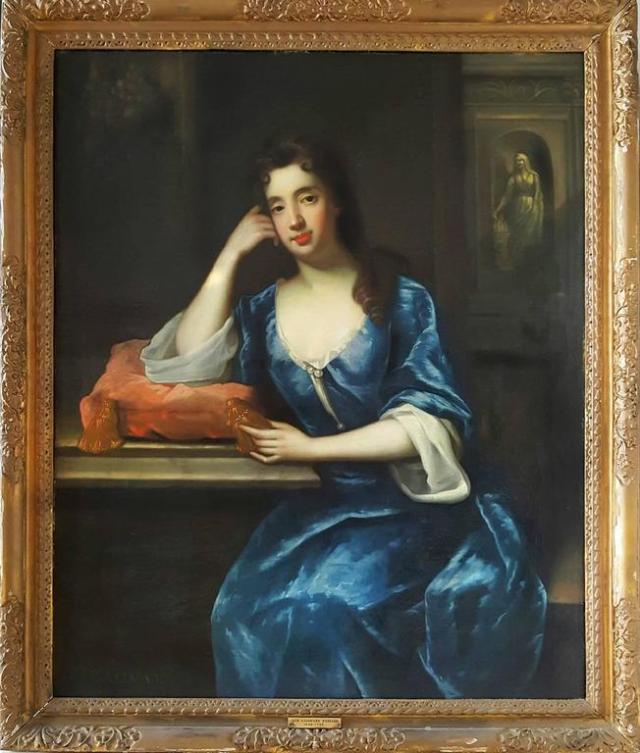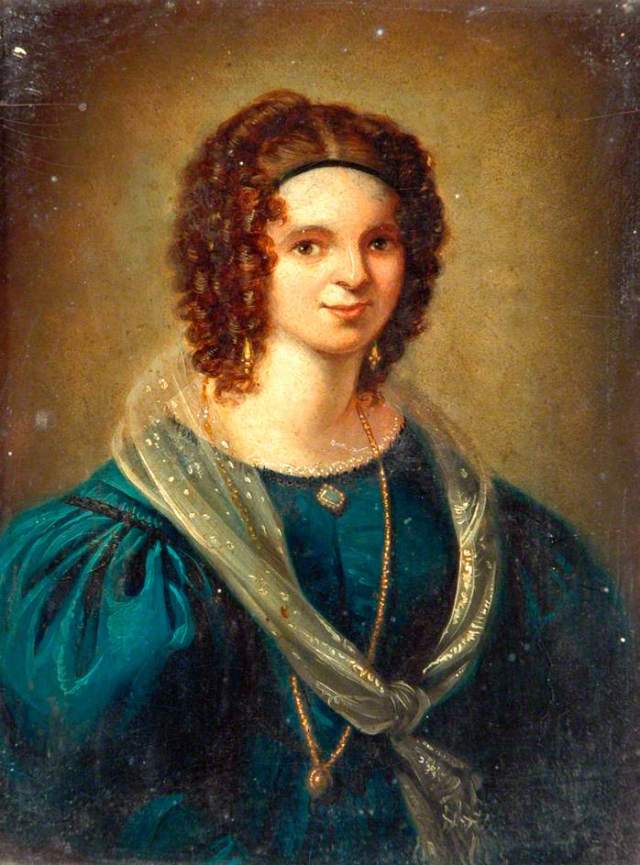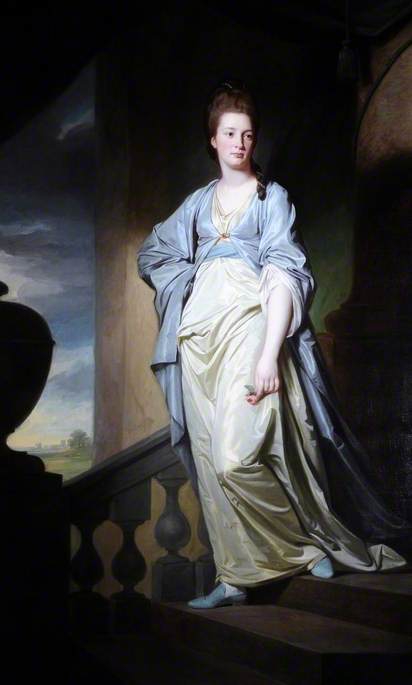No-one seems quite sure how the colour blue became associated with the feeling of sadness, some say its origins lay back in Greek mythology whilst others say it has links to the devil. Whatever the true origin, how could anyone possibly feel blue wearing these sumptuous gowns that we’re going to take a look at?

So many shades of blue exist, from the palest baby blue to darkest navy blue and everything in-between and the colour was clearly very popular during the Georgian era. Given the amazing array of paintings sadly I only have space to share few with you, but I do hope you enjoy them.

An interesting point worth noting about these paintings is that to create the impression of fabric required a very specific skill and it seems, not a skill that some of the most famous artists had, so they employed ‘drapery painters’ to paint the more intricate and detailed aspects of fabrics, to ensure that they looked as natural as possible. One of these, who was regarded as being amongst the best was Joseph Van Aken. Another was Peter Toms who was one of the founding members of the Royal Academy.
Mr James Peters was Kneller’s drapery painter so it seems highly likely that he painted this stunning blue dress.

I came across this description in The London Tradesman, of exactly what a drapery painter’s role was so thought you might find it interesting.
The drapery painter is but the lowest degree of a liberal painter; he is employed in dressing the figures, after the painter has finished the face, given the figure its proper attitude and drawn the outlines of the dress or drapery.
A portrait painter who is well employed, has not time to cloath his figures, and therefore employs a drapery painter to finish that part of the work.
This workman must have a tolerable notion of painting in general; but his chief skill consists in his knowledge of colours and the mixing of them, to produce proper shades; for the painter generally draws the outline and leave him to fill up the empty space with proper colours.
The drapery painters are generally employed in signpost drawing, and other sorts of painting that do not require a masterly hand: they have commonly but a dull genius and a mere mechanical head: however, those who are eminent in their way and in the employ of a noted master make very handsome bread; they may sometimes earn a guinea a day, and must be mere bunglers if they cannot make half a guinea.
Their education may be as low as you please; but as in all other branches that handle the pencil, they ought to be early acquainted with the use of it: the sooner they are bound apprentices the greater proficiency they may be expected to make. A sober disposition and a sound constitution are absolutely requisite.

And the final selection:




UPDATE
Following a great deal of discussion amongst readers, I thought I would add some of the earliest references to a few shades of blue that I have come across in the newspapers.
Navy Blue
Mr. Sainsbury’s liveries were a deep navy blue, with silver lace and epulets…
Morning Post and Daily Advertiser, 7 October 1780
A slight variation on the term appeared in the London Chronicle, 16-18 August 1781.
His Majesty and the Prince of Wales, with Sir Hugh Palliser and Lord Sandwich, were dressed in a naval blue, with narrow gold lace.
Turquoise
The Parisian fashion report for June 1779 confirms for the existence of the colour turquoise in clothing.
CHEMISE A LA CIRCE
The waist is marked with three gathers, surmounted with an Algerine girdle. The front is in Turkish style, and the body is ornamented from top to bottom. It has a very coquettish appearance. The materials generally used for these dresses are Le Pekin’ des trois raisons, summer taffetas, Chinese corisandre, striped turquoise, white crape, muslin, embroidered, worked and plain. Linen, Florence, plain, painted. &c.
Evening Mail, 26-28 June 1799
Saxon Blue
A Grant has pass’d the Great Seal unto George Spence of Southwark, Dyer; Charles Lathbury of London, Warehouseman; and John Christopher Wagnelin of London, Merchant; of their new-invented Art of Dying Green and Blue Saxon Colours, to them and their Heirs for 14 Years.
General Evening Post, 13-16 August 1748
Royal Blue
It is said to have been created by millers in Rode, Somerset, a consortium of which won a competition to make a dress for Queen Charlotte, consort of King George III. The article does not, however, give a specific date for this, but I did manage to find this article below confirming the existence of such a colour by 1782.
Morning Herald and Daily Advertiser, 23 April 1782.
NEW-INVENTED PATENT SPRING HATS, and SCOTCH BONNETS.
HENRY HARDY, at the King’s-Arms, No. 7, in the Old Bailey, respectfully acquaints the Public, that he has, with much pains, labor, and expence, invented a neat, light, and elegant covering for Ladies Hats and Scotch Bonnets… and adapted to the colours which are at present much the mode: among other colours are the royal blue, the green, pink, the Emperor’s eye, straw, &c…
Featured Image
Miss Taylor by Joseph Highmore (1692-1780) Courtesy of Manchester Art Gallery

